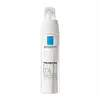What's inside
What's inside
 Key Ingredients
Key Ingredients

 Benefits
Benefits

 Concerns
Concerns

No concerns
 Ingredients Side-by-side
Ingredients Side-by-side

Water
Skin ConditioningDipropylene Glycol
HumectantButylene Glycol
HumectantGlycerin
HumectantHydrogenated Polydecene
EmollientDimethicone
EmollientTranexamic Acid
AstringentErythritol
HumectantTrehalose
HumectantXylitol
HumectantPEG/PPG-17/4 Dimethyl Ether
Skin ConditioningPEG-60 Glyceryl Isostearate
Pentaerythrityl Tetraethylhexanoate
EmollientPEG-5 Glyceryl Stearate
EmulsifyingPhenoxyethanol
PreservativeCetyl Ethylhexanoate
EmollientBehenyl Alcohol
EmollientTheanine
EmollientDimethylacrylamide/Sodium Acryloyldimethyltaurate Crosspolymer
Carbomer
Emulsion StabilisingBatyl Alcohol
EmollientHydrogenated Palm Oil
EmollientElaeis Guineensis Kernel Oil
EmollientDipotassium Glycyrrhizate
HumectantElaeis Guineensis Oil
EmollientSodium Metaphosphate
BufferingPotassium Hydroxide
BufferingPhytosteryl/Octyldodecyl Lauroyl Glutamate
Skin ConditioningSodium Metabisulfite
AntioxidantSaccharomyces Ferment Lysate Filtrate
Skin ConditioningPEG/PPG-14/7 Dimethyl Ether
Skin ConditioningTocopherol
AntioxidantCitric Acid
BufferingWater, Dipropylene Glycol, Butylene Glycol, Glycerin, Hydrogenated Polydecene, Dimethicone, Tranexamic Acid, Erythritol, Trehalose, Xylitol, PEG/PPG-17/4 Dimethyl Ether, PEG-60 Glyceryl Isostearate, Pentaerythrityl Tetraethylhexanoate, PEG-5 Glyceryl Stearate, Phenoxyethanol, Cetyl Ethylhexanoate, Behenyl Alcohol, Theanine, Dimethylacrylamide/Sodium Acryloyldimethyltaurate Crosspolymer, Carbomer, Batyl Alcohol, Hydrogenated Palm Oil, Elaeis Guineensis Kernel Oil, Dipotassium Glycyrrhizate, Elaeis Guineensis Oil, Sodium Metaphosphate, Potassium Hydroxide, Phytosteryl/Octyldodecyl Lauroyl Glutamate, Sodium Metabisulfite, Saccharomyces Ferment Lysate Filtrate, PEG/PPG-14/7 Dimethyl Ether, Tocopherol, Citric Acid
Water
Skin ConditioningGlycerin
HumectantSqualane
EmollientPropanediol
SolventButylene Glycol
HumectantButyrospermum Parkii Butter
Skin ConditioningPentylene Glycol
Skin ConditioningDimethicone
EmollientPolymethylsilsesquioxane
Polysorbate 20
EmulsifyingGlyceryl Acrylate/Acrylic Acid Copolymer
HumectantDimethiconol
EmollientAluminum Starch Octenylsuccinate
AbsorbentAmmonium Polyacryloyldimethyl Taurate
Emulsion StabilisingDisodium EDTA
Acetyl Dipeptide-1 Cetyl Ester
Skin ConditioningWater, Glycerin, Squalane, Propanediol, Butylene Glycol, Butyrospermum Parkii Butter, Pentylene Glycol, Dimethicone, Polymethylsilsesquioxane, Polysorbate 20, Glyceryl Acrylate/Acrylic Acid Copolymer, Dimethiconol, Aluminum Starch Octenylsuccinate, Ammonium Polyacryloyldimethyl Taurate, Disodium EDTA, Acetyl Dipeptide-1 Cetyl Ester
 Reviews
Reviews

Ingredients Explained
These ingredients are found in both products.
Ingredients higher up in an ingredient list are typically present in a larger amount.
Butylene Glycol (or BG) is used within cosmetic products for a few different reasons:
Overall, Butylene Glycol is a safe and well-rounded ingredient that works well with other ingredients.
Though this ingredient works well with most skin types, some people with sensitive skin may experience a reaction such as allergic rashes, closed comedones, or itchiness.
Learn more about Butylene GlycolDimethicone is a type of synthetic silicone created from natural materials such as quartz.
What it does:
Dimethicone comes in different viscosities:
Depending on the viscosity, dimethicone has different properties.
Ingredients lists don't always show which type is used, so we recommend reaching out to the brand if you have questions about the viscosity.
This ingredient is unlikely to cause irritation because it does not get absorbed into skin. However, people with silicone allergies should be careful about using this ingredient.
Note: Dimethicone may contribute to pilling. This is because it is not oil or water soluble, so pilling may occur when layered with products. When mixed with heavy oils in a formula, the outcome is also quite greasy.
Learn more about DimethiconeGlycerin is already naturally found in your skin. It helps moisturize and protect your skin.
A study from 2016 found glycerin to be more effective as a humectant than AHAs and hyaluronic acid.
As a humectant, it helps the skin stay hydrated by pulling moisture to your skin. The low molecular weight of glycerin allows it to pull moisture into the deeper layers of your skin.
Hydrated skin improves your skin barrier; Your skin barrier helps protect against irritants and bacteria.
Glycerin has also been found to have antimicrobial and antiviral properties. Due to these properties, glycerin is often used in wound and burn treatments.
In cosmetics, glycerin is usually derived from plants such as soybean or palm. However, it can also be sourced from animals, such as tallow or animal fat.
This ingredient is organic, colorless, odorless, and non-toxic.
Glycerin is the name for this ingredient in American English. British English uses Glycerol/Glycerine.
Learn more about GlycerinWater. It's the most common cosmetic ingredient of all. You'll usually see it at the top of ingredient lists, meaning that it makes up the largest part of the product.
So why is it so popular? Water most often acts as a solvent - this means that it helps dissolve other ingredients into the formulation.
You'll also recognize water as that liquid we all need to stay alive. If you see this, drink a glass of water. Stay hydrated!
Learn more about Water